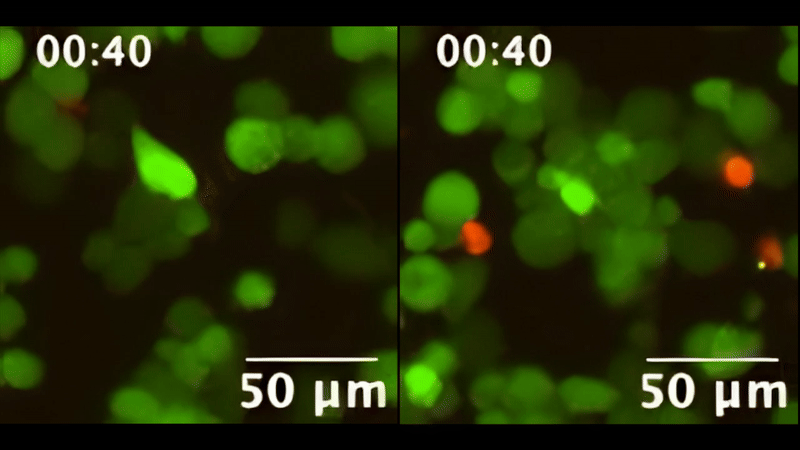The Taabazuing lab combines biochemistry and cell biology approaches to study the molecular regulation of cell death.
Specifically, we are interested in pyroptotic and apoptotic cell death. Our goal is to understand how cell death impacts the immune system and to leverage that to develop therapeutics for human diseases.
Image Credit: Shraddha Nayak, Ph.D (The Animation Lab - Janet Iwasa)
Pyroptosis
Pyroptosis is a type of cell death that is induced by intracellular pathogens or host derived danger signals. Typically, pattern recognition receptors sense the danger signal, bind to the adaptor protein ASC, and recruit the pro-caspase-1 zymogen into a multiprotein signaling platform known as the inflammasome. The oligomerization of pro-caspase-1 enables caspase-1 auto-proteolytic maturation, which then activates cytokines, including IL-1β and IL-18, as well as the pore forming protein GSDMD that induces pyroptosis. Some inflammasomes activate caspase-1 without the ASC adaptor protein, resulting in pyroptosis without cytokine maturation. Our goal is to uncover the molecular mechanisms of inflammasome assembly leading to the diverse downstream signaling outputs. This knowledge will aid in developing therapeutics for auto-inflammatory disorders and cancer.
Apoptosis
Apoptosis is a type of programmed cell death that is important for maintaining cellular homeostasis. Apoptosis can be activated by a number of diverse stimuli, including genotoxic stress. As DNA damage can lead to oncogenic transformations and many chemotherapeutic drugs induce DNA damage to cause apoptotic cell death in cancer cells, it underscores the need to understand the molecular regulation of apoptosis. We are particularly interested in understanding the regulation of genotoxic stress induced apoptosis. PIDD is a protein that senses genotoxic stress and forms distinct multiprotein signaling platforms like the inflammasome. Depending on the severity of the genotoxic stress, PIDD is thought to initiate a cell survival signaling cascade or a pro-death signaling cascade. Our goal is to elucidate the molecular mechanism of how PIDD senses DNA damage, becomes activated, and regulates cell fate decisions.
Control
LPS Treated
ASC-GFP Expressing THP1 Macrophages
Join our team!
To join our collaborative and interdisciplinary team, candidates should be prepared to email a cover letter, CV, and a statement of research interests to Dr. Taabazuing.
Please visit our contact page to start the process.



